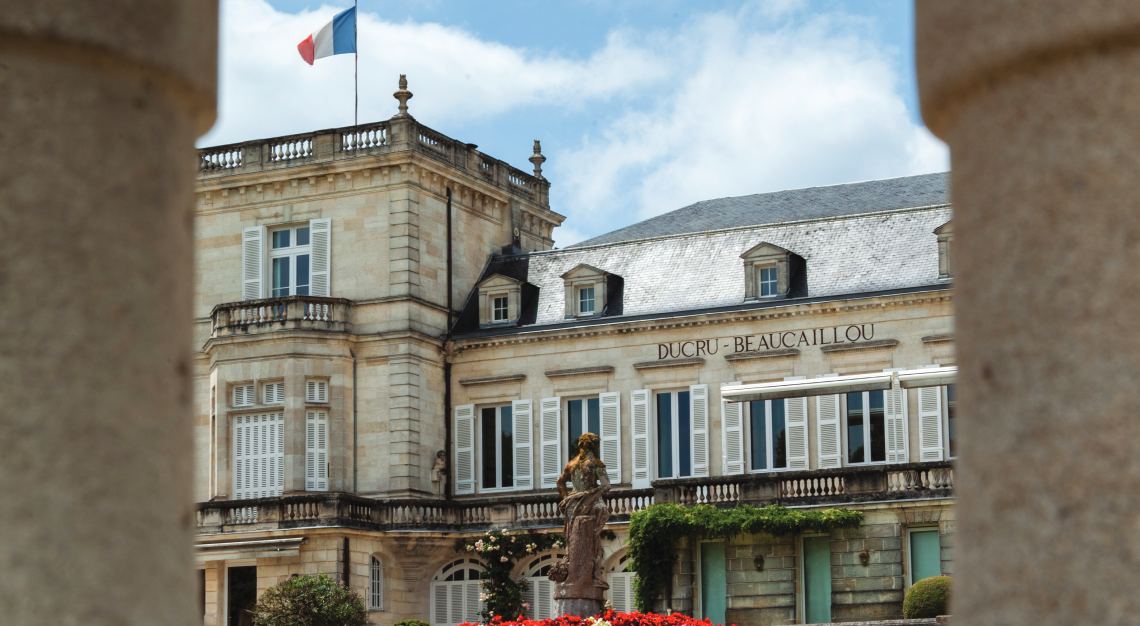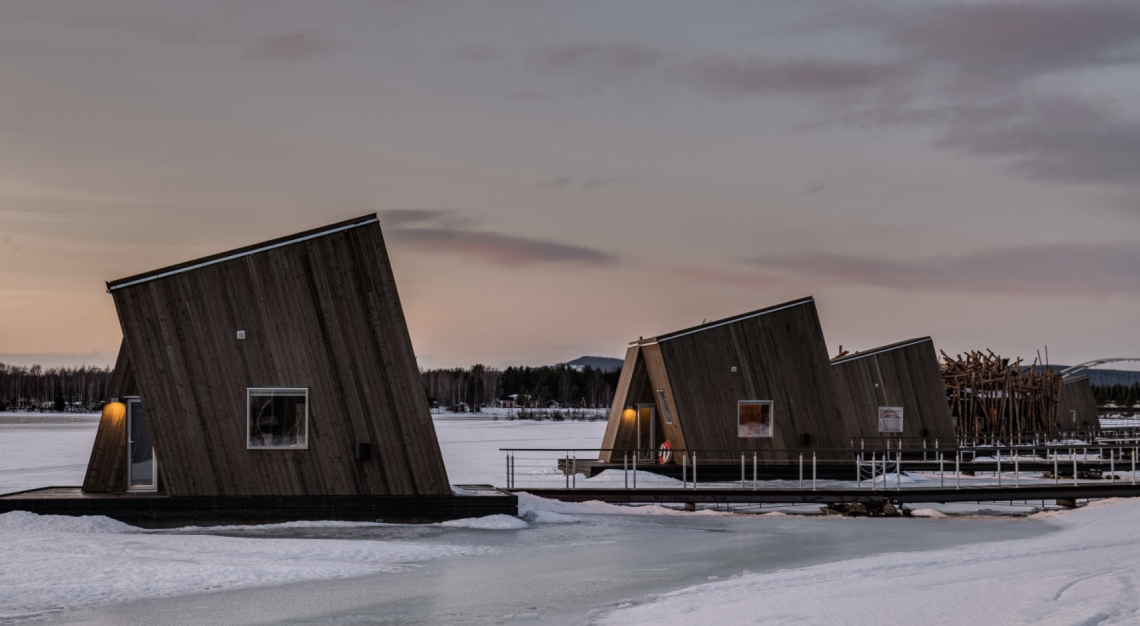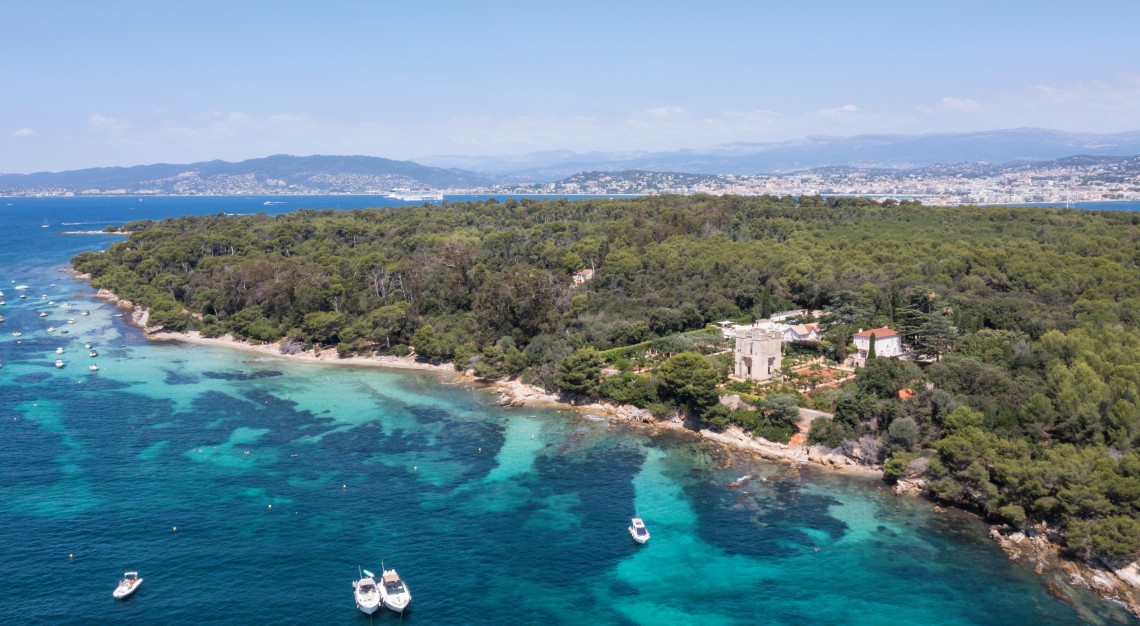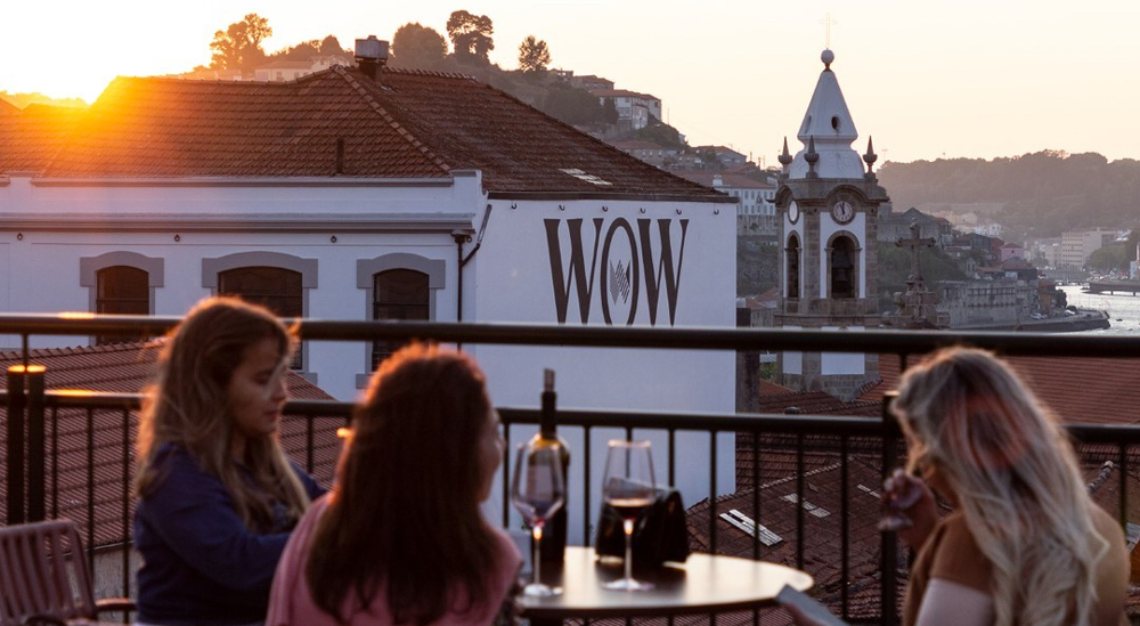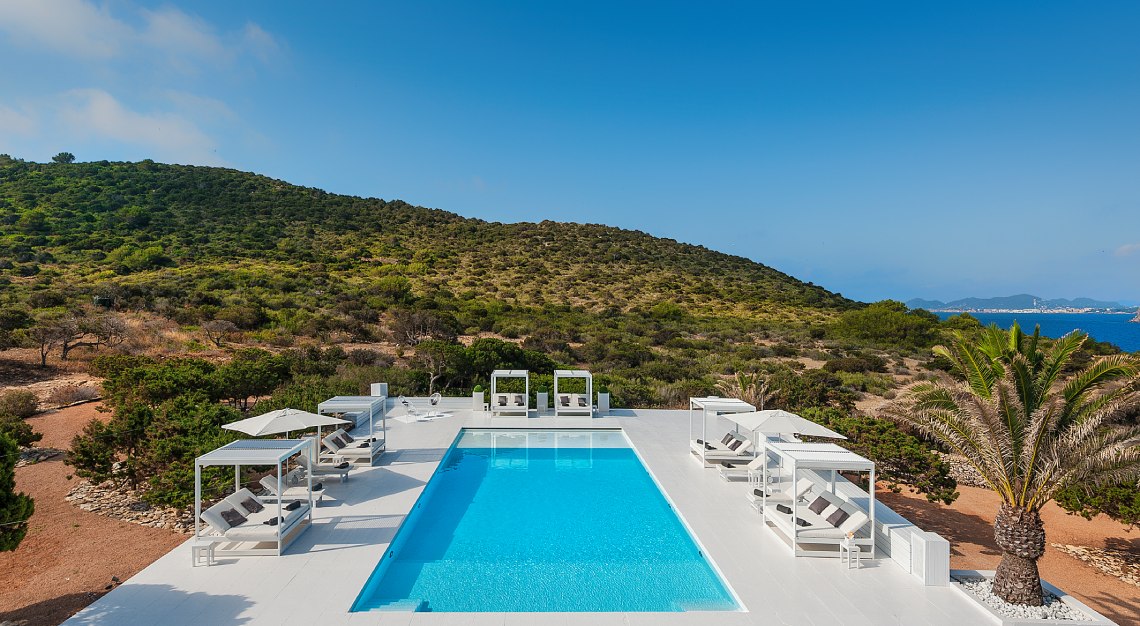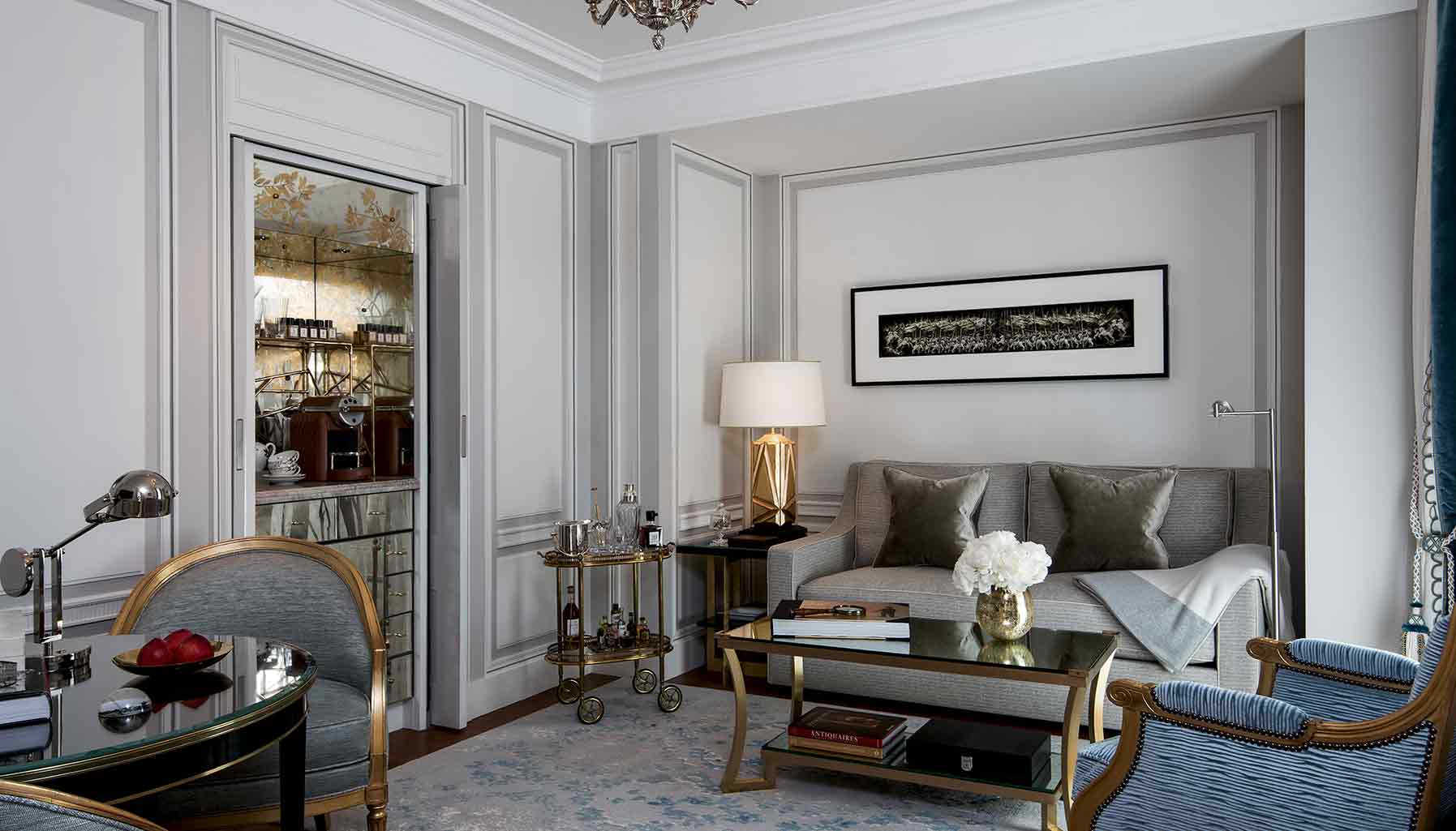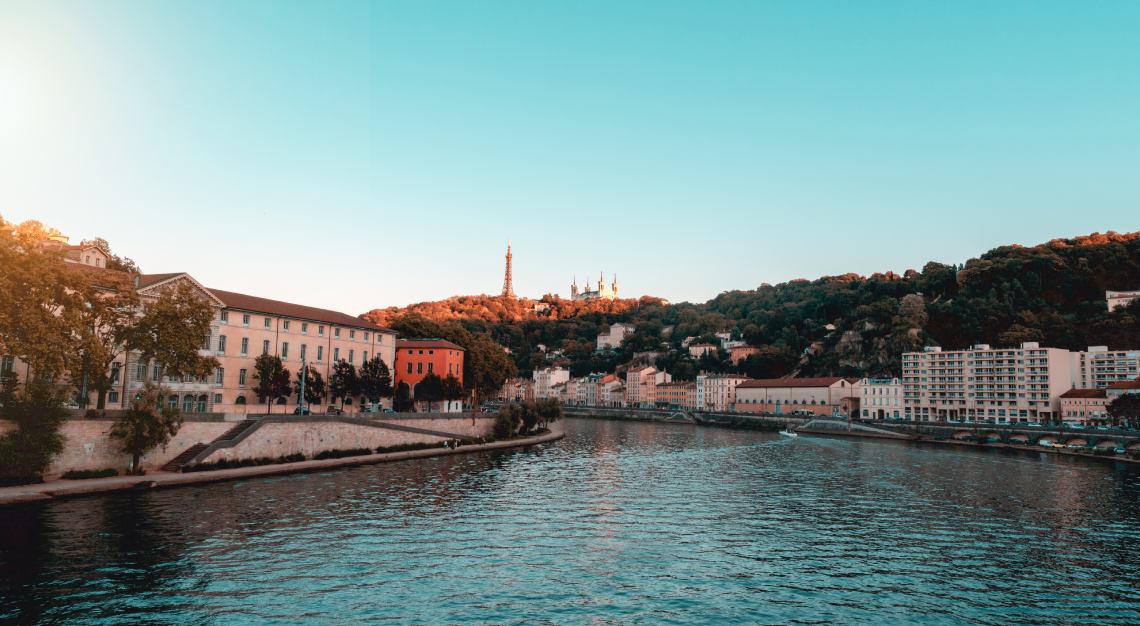From the wine to the contemporary art, modernity now reigns at the storied Château Ducru-Beaucaillou
Bordeaux is a beloved wine region, but it has a reputation for being a little staid. For an elite property, incentives for radical change are few. Take Château Ducru-Beaucaillou, the revered second-growth producer in the Saint-Julien appellation. Founded in 1720, Ducru is celebrating 300 years of exceptional winemaking with the recent release of its 2020 vintage, decked out with a special commemorative label, to high demand at US$239 (S$324) a bottle. The château has had a level of longevity that is hard to grasp: When the estate was formed, the French Revolution was still nearly 70 years away.
“Ducru has historically had an aura about it,” Jamie Ritchie, the worldwide head of Sotheby’s wine department, says of its reputation for plush and long-lived red wines based primarily on Cabernet Sauvignon and Merlot.
But the current custodian of the legend of Ducru (insiders use just the first part of its name), Bruno-Eugène Borie, doesn’t quite fit the expected mould. His family took over the vineyard in 1942, and Borie, who personally assumed control in 2003, is something of a “bad boy,” in his own words, and someone who is constantly innovating and blowing through the stop signs of convention. When he realized, for instance, that there was no way to decant and pour those enormous large-format bottles seen in wine-auction catalogs and on top-tier restaurant wine lists, he simply invented a contraption, the Somm Butler, to help out (it’s been used at Spago, Robuchon and the like). It cradles the bottle and makes it easy to serve.
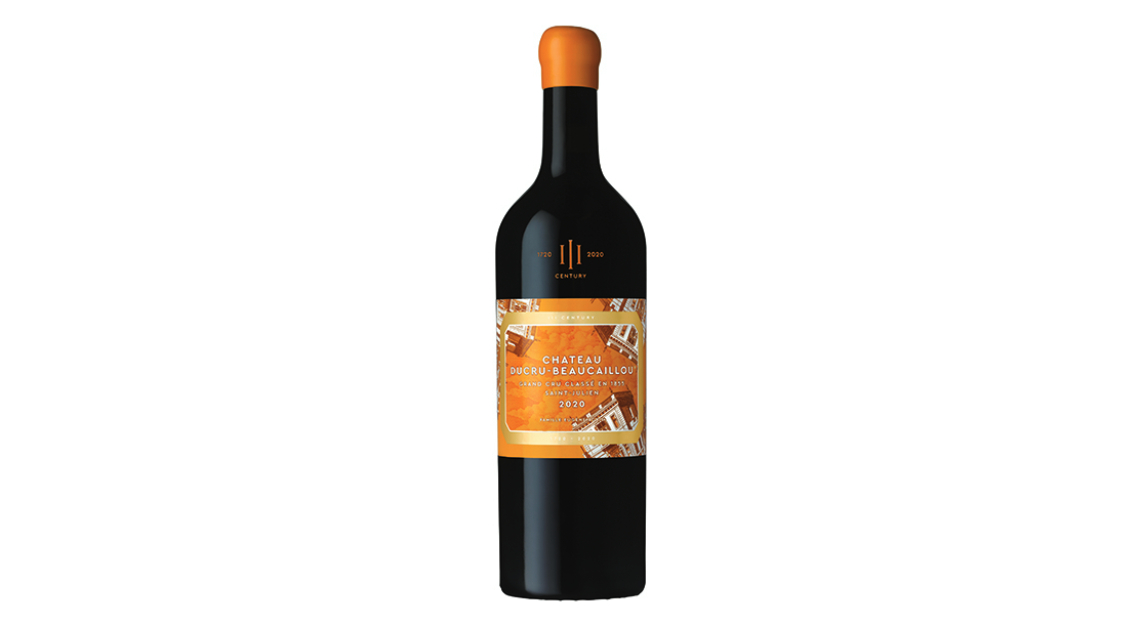
“We are 300 years young,” says Borie, who, at 65, is possessed of high energy, intense focus and the ability to wink at pretension. Like a lot of Frenchmen, he has the gift of gab, but he actually has something to say, especially about taking a revered name and giving it a good shake to make sure it can move forward. He adds that his motto, borrowed from an artist friend, is “Modern Forever.”
That’s certainly reflected in his taste in art and design. Borie was a collector of Jean-Michel Basquiat’s work in the 1990s, before it was de rigueur for high-end buyers, and he put a neon artwork of a cat dribbling a basketball, by French artist Alain Séchas, in the august cellars where the wines age before they are released. The time he spent in his younger years trawling the galleries in New York’s SoHo and Chelsea neighbourhoods seems to have paid off.
When Borie was on the professional association called the Conseil des Crus Classés de Bordeaux in the ’90s, he tried to realise an elaborate installation by the great French conceptual artist Daniel Buren for the group’s headquarters. It involved, he recalls, “61 tall poles, each carrying a striped banner bearing the silhouette of each of the 61 growths.” The proposal was too radical for his Bordelais compatriots, so he had to give it up. Looking back on the project now, it seems ahead of its time.
Closer to home, he has gotten his way, with spectacular results. Borie hired a top interior designer from Paris to gut-renovate the château itself—a massive stone pile with a center wing dating to 1820, flanked by later-Victorian towers at either end—and the result is full of eye-popping color and cutting-edge lighting and furniture, a vibrant and un-quiet scheme that is miles away from the musty and fusty environs seen elsewhere in the neighbourhood.
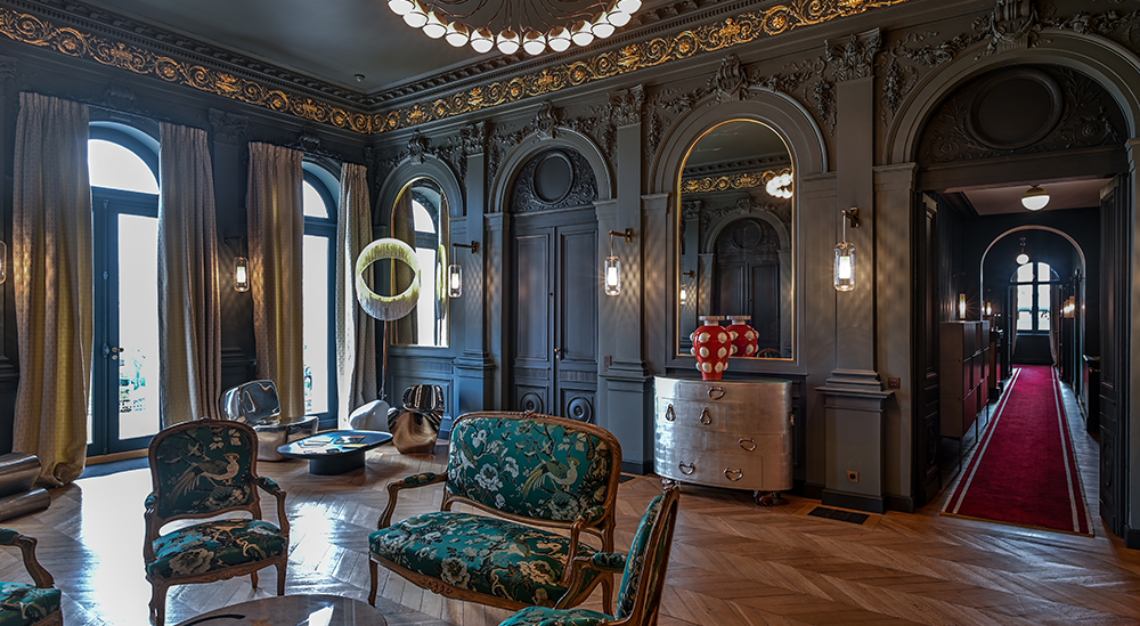
Wineries, particularly ones housed in old castles, are a very high-end version of living above the store, where design choices are intensely personal. Not only did Borie grow up in the château, but he now lives there with his wife, Frederique, and their son and daughter. His 93-year-old mother, Monique, also has her own apartment in the château; she’s been living on-site since 1950. Among its other charms, the estate is set on an elaborately landscaped 4.8-hectare park, designed by Eugène Bühler in the 19th century.
The Bories are also the previous proprietors of Bordeaux’s Château Haut-Batailley, and Borie’s brother, François-Xavier, owns and runs Château Grand-Puy-Lacoste, which has a lesser ranking than Ducru but is respected and venerable. Given that major corporations such as LVMH are running some of the highest-profile neighboring producers, it’s worth noting that members of the Borie family control two of the best, oldest names in the region.
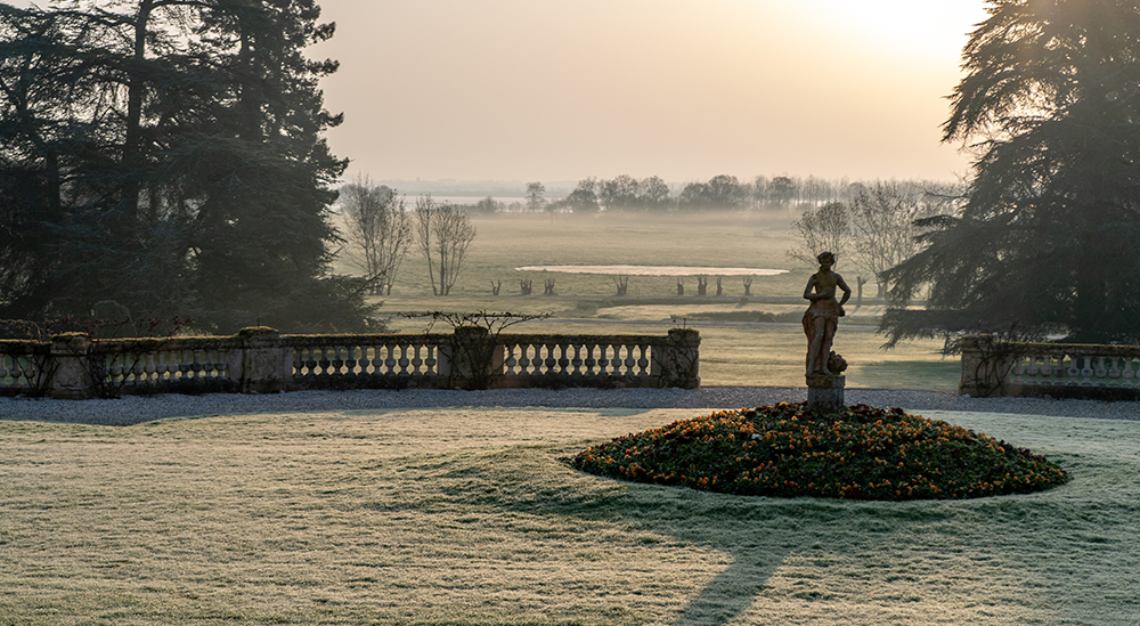
The decorator Borie hired to energise the Ducru château, Sarah Poniatowski, founder of Maison Sarah Lavoine, notes that Bordeaux has a reputation within France of being “very conservative” and that the fun comes from how Ducru’s current principal upends expectations.
“That’s what’s great about Bruno,” says Poniatowski. “When you look at him and meet him for the first time, you think he’s always a conservative man. But he’s the opposite of that. We really had a great time on this project, because he’s so bold.”
Poniatowski knows something about updating gilded lineages: She’s technically a princess, being descended from a king of Poland, and she was married to French pop star Marc Lavoine. Her strategy for Ducru was all about pairing “very strong contemporary pieces that contrasted a lot with the classical side of the house.”
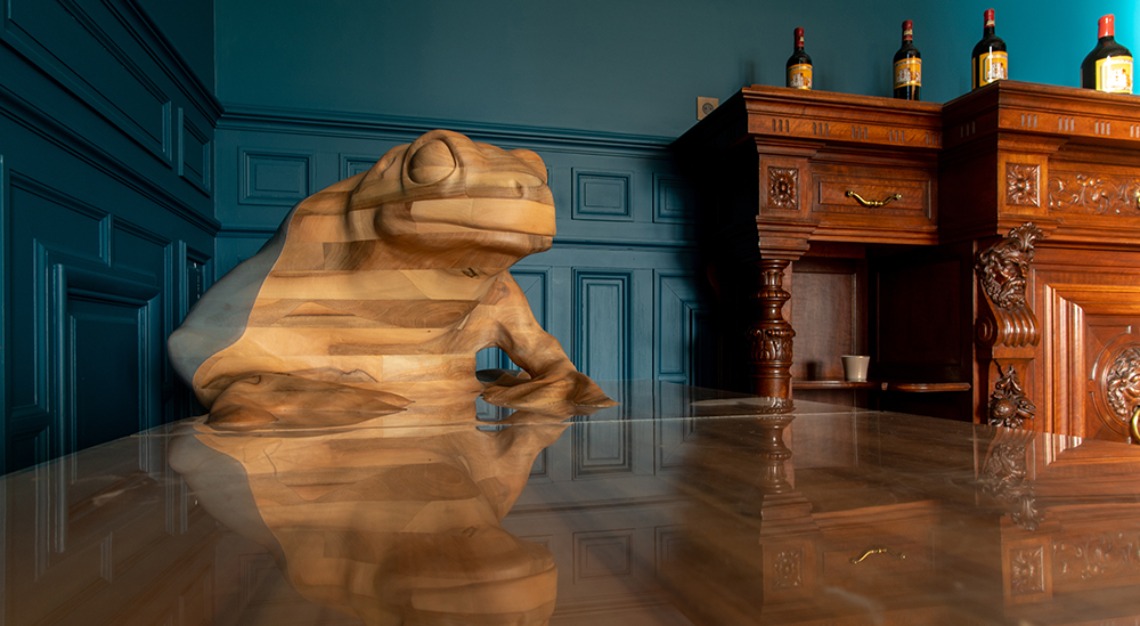
In the reception room known as the Grand Salon, objects by some of the world’s most cutting-edge designers are juxtaposed with mouldings, panelled walls and other elaborate woodwork. A mirrored commode by the Paris design duo Garouste & Bonetti as well as Ron Arad’s Big Easy chair and Marc Newson’s Zenith chaise, made of gleaming aluminium, enliven the centuries-old architecture.
The walls and some of the upholstered furniture are in different shades of the same rich teal colour used all over the house—highly untraditional in one way, but then again, it may evoke the deep influence of water on the Médoc district.
Home to Ducru, the legendary Médoc is located on an isthmus between the Atlantic Ocean and the estuary of the mighty Gironde River, which has a profound impact on the wines.
In the living room overlooking the lush park, the dining table is a round, chic concrete piece by Martin Szekely, surrounded by tubular chairs from Cassina based on a design by the great French-woman Charlotte Perriand. Throughout, the lighting is unexpectedly sleek and surprising, including a fringed lamp by the Dutch designer Wieki Somers and a mod wall sconce by Apparatus. But the house’s past wasn’t discarded. When, during construction, a layer of old wallpaper was revealed in the dining room, Poniatowski had it replicated and installed in several spaces.
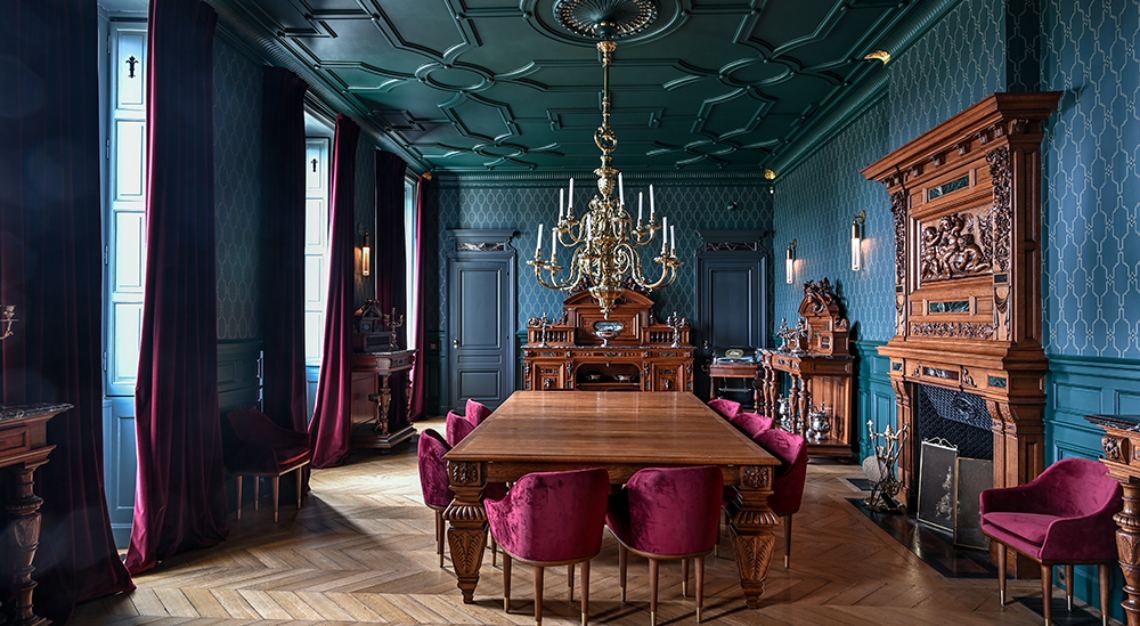
All of it delights Borie. “Sarah is very modern,” he says. “She gave us something comfortable, but also hedonistic.”
Of course, it’s the hedonism in the bottle that the larger world is focused on, given that the average person stands scant chance of snagging an invitation to the château (though Borie, an enthusiastic cook, does a lot of entertaining).
When he arrived in the top job a few years after his father died, Borie was lucky enough to start with a storied brand. But his first year running the estate, 2003, was a notoriously hot, tricky vintage, with weather that was responsible for thousands of deaths across Europe. Right away, he demonstrated a serious hands-on attitude and a commitment to flexibility.
Going against an instinct that would become his hallmark—what he calls a “constant process of reduction” in the vineyard, referring to pruning and the selection of grapes—he made sure that the method for this special vintage left leaves on the vine, forming what’s called a canopy, in an effort to protect the grapes from the heat. It worked.
In the 18 vintages since then, he has significantly reduced the amount of wine the château produces—what had once been 15,000 yearly cases is now more like 7,000—a decision about quality that is not great for the bottom line (given that whatever Ducru makes will always sell). With a sly smile, Borie says, “Many of the decisions were opposite to our accountant’s suggestions,” something of an understatement.
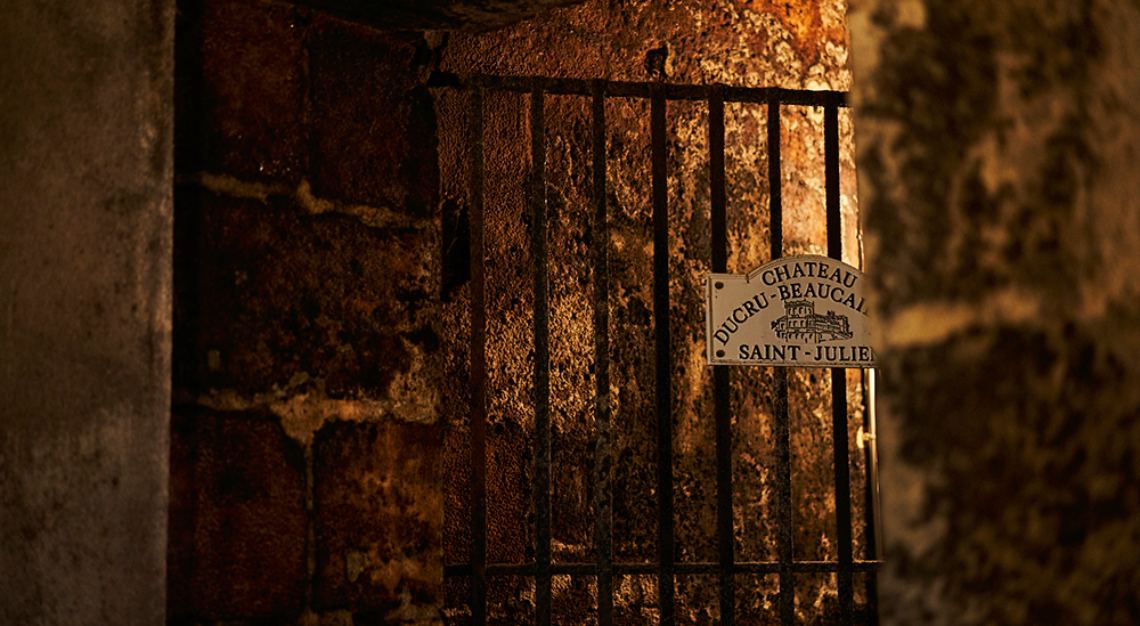
The process of aging Bordeaux in oak is always an expensive endeavour, and Borie increased the length of Ducru’s pre-release cellar slumber by 50 percent, from 12 months to 18 months, before the wine is sold. “We make wine for the future,” says Borie. “And what is the maturation in casks? It’s mainly to give the aging capacity to the wine.”
Not that Borie lacks business acumen. In 1985, well before his stewardship of Ducru, he purchased the famed French aperitif Lillet, increased the sales by a factor of 20 in France and a factor of six in the United States, and then sold it in 2008—just before the global economic meltdown.
And he made a move at Ducru that goes against an ingrained part of French culture: He eliminated automatic August vacations for workers on the estate. As the climate has warmed, late summer has become a much busier period in the vineyards, with harvests coming earlier and earlier. Joking that it’s considered “criminal in France” to make people work at that time of year, Borie says it is all in the service of “changing and adapting, making sure we don’t do the same things every year just because it’s comfortable.”
Bucking the system has paid off. As Ritchie of Sotheby’s notes, “Bruno has brought more volume and weight and more dimension to the wine, but keeping it refined and classy.”
The 1970 Ducru is the one that keeps popping up at auction, Ritchie adds, and is one for collectors to seek out. In November 2020, 10 bottles of the 1970 went for nearly US$2,000 (S$2,711) at Sotheby’s Hong Kong. Or you can go to a fine restaurant such as Eleven Madison Park in Manhattan. “We’re fortunate enough to be able to feature several legendary vintages, including 1961 and 1966, the latter of which is in magnum,” says the restaurant’s wine director, Watson Brown. “When Ducru reaches a full maturity, there is a certain softness on the palate which is really inviting, but the wine still maintains its length and aromatics.” Eleven Madison Park’s list also offers the 1988, a bit of a sleeper vintage that will reward oenophiles with the elegant flavors of a mature Bordeaux, such as mellow cassis and coffee.
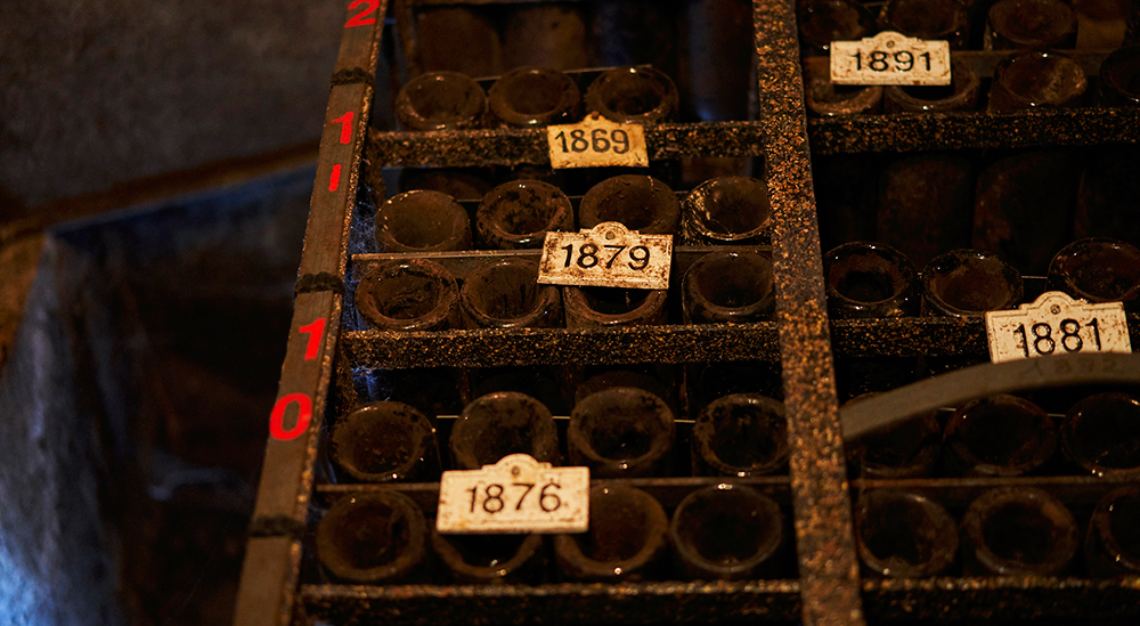
For collectors, a good entry point for the estate’s charms is Ducru’s “second label,” Croix de Beaucaillou, made from different plots. The 2010 (around US$75/S$102) demonstrates Borie’s interest in design to be sure, with a label dreamed up by jewelry maven (and daughter of Mick) Jade Jagger. It needs decanting and/or cellaring time but then keeps your interest with a tightly wound intensity.
Borie jokes that he can pursue quality at this level via unconventional means because “I will not fire myself” for overspending or overthinking things. It’s good to be the roi. But the passion for the process and the results is deeply felt on his part and can be deeply tasted by everyone. “We’re experimenting all the time,” he says, “and there’s a real ambition to find the best solution.”
This story was first published on Robb Report USA
